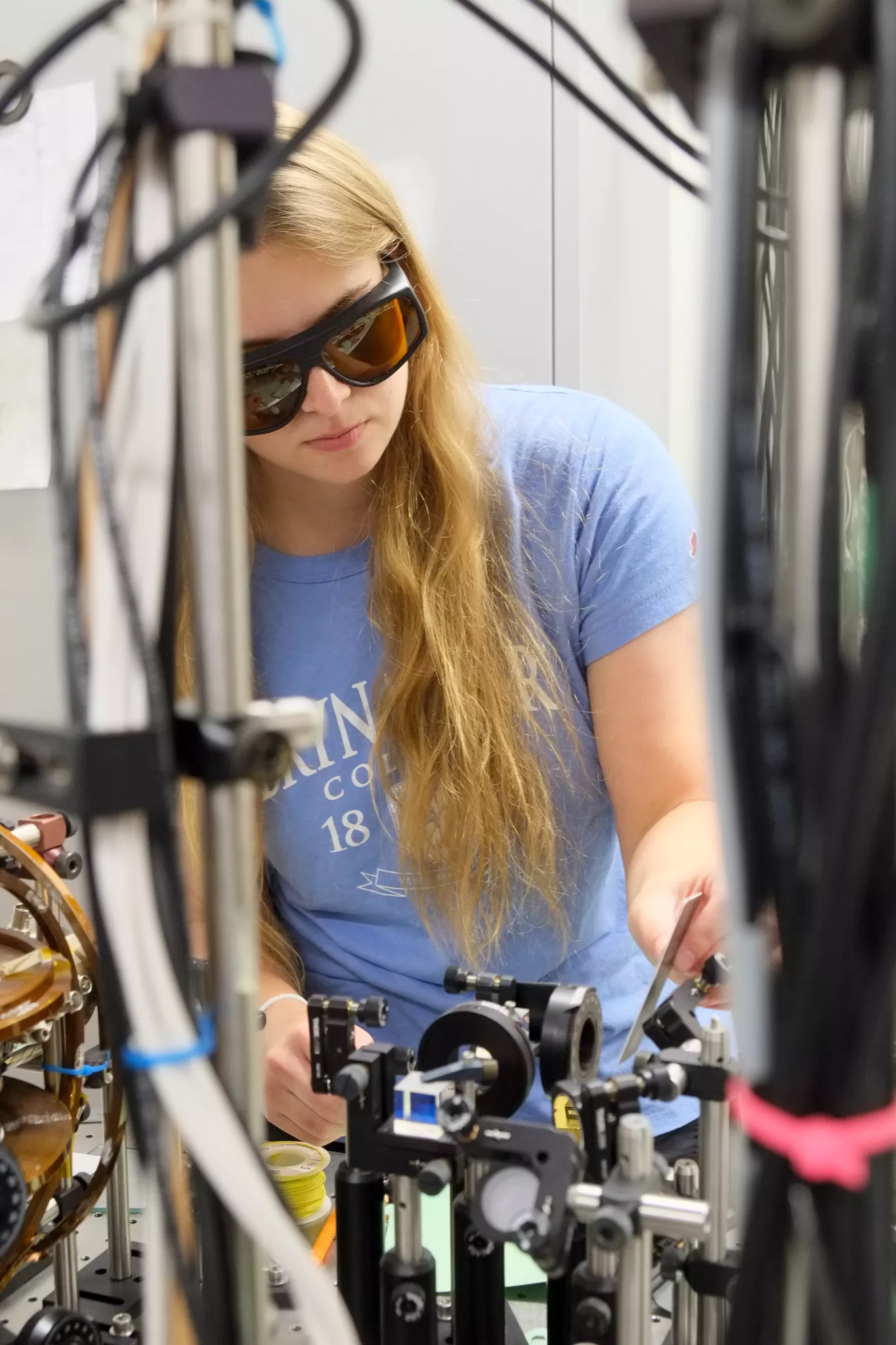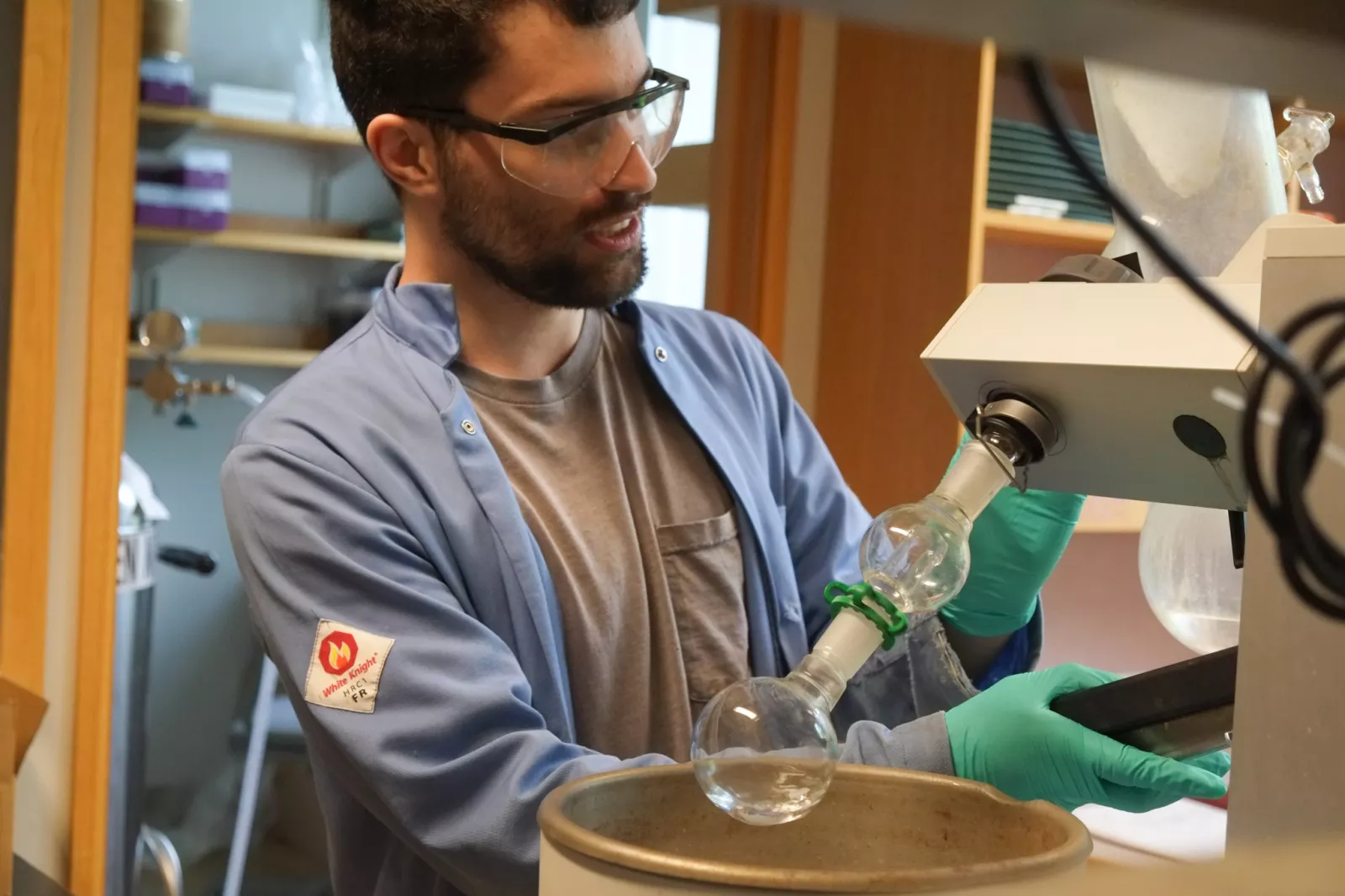GSAS: Working on Scientific Breakthroughs Over Summer Break
Parts of campus may have been quiet over the summer, but Park Science Center buzzed with activity. Graduate students, supported by the recently established Supplemental Summer Research Fellowships and Assistantships, conducted cutting-edge research in science and mathematics while mentoring undergraduate students in the Summer Science Research program. We stopped by the labs to see what they were up to.
GREGORY FELDMAN
FIFTH-YEAR PH.D. STUDENT
Feldman spent the summer in Professor Bill Malachowski’s lab creating molecules through organic synthesis for potential pharmaceutical development. He pointed out a chalkboard in the lab covered in chemical equations representing projects he has worked on with undergraduate students. It may look unfocused, he says, but it reflects the experimental nature of the work: testing different substrates and conditions to find results worthy of publication and further research.
“Every day we discover interesting things," he says. "Unfortunately, not all those things are publishable. It’s still interesting to get these results, even though they might be considered negative. I kind of feel like every failure we have gets us closer to a success. You can’t publish negative results, but that doesn't make them any less interesting, and that doesn't make the chemistry any less nenjoyable to do.”
SARAH SPIELMAN
FOURTH-YEAR PH.D. STUDENT
In Professor Michael Noel’s lab, Spielman studies energy exchange as it relates to quantum physics, “the fundamental physics that govern our universe,” she says. “In everyday life, energy exchange is why hot coffee eventually cools down to room temperature, reaching equilibrium. But at the quantum level, something strange can happen: the coffee stays hot forever. I study why this happens."
The research could have implications for quantum computing, which may be thousands of times faster than normal computing. "Quantum physics has given us many aspects of modern life, from lasers to microchips to GPS,” she says. “I study the underlying physics at play, which could open the door to technology we've only dreamed of."
Spielman sends infrared lasers through a system of lenses and mirrors to trap ultracold (“colder than space”) atoms and study their energy exchange process. She also mentors undergraduate students from Bryn Mawr and Ursinus College, where collaboration has allowed her to take both experimental and computational research approaches.
JAMES VOGEL
SIXTH-YEAR PH.D. STUDENT
In Professor Patrick Melvin’s lab, Vogel worked alongside a group of undergraduates on fluorinating molecules, research that has applications to both the pharmaceutical and agrochemical industries. The goal is to be able to add fluorine atoms to as many different types of molecules as possible, enabling the development of lower dosage medications.
“When you add fluorine atoms to molecules like pharmaceutical drugs,” Vogel says, “you can increase their potency, you can increase their stability, and with lower doses you can avoid some adverse effects.”
Published on: 10/22/2024


